Life Cycle Assessment of a Sustainable Prefabricated Housing System: A Cradle-to-Site Approach Based on a Small-Scale Experimental Model
Abstract
1. Introduction
2. Materials and Product Design
2.1. Materials
2.2. Mix Design and Testing
- Concrete: CFA-based concrete for the structural applications and other;
- LW mix: CFA-based lightweight (LW) mix for the prefabricated walling members.
3. Methodology
Erection of Small-Scale Model House
4. Goal and Scope of the Study
System Boundaries
5. Inventory Analysis
5.1. Phase A
5.2. Phase B and C
5.3. Phase D and E
5.4. Phase F
5.5. Phase T
6. Impact Assessment and Interpretation of Results
6.1. Impact Assessment
6.2. Interpretation, Results and Discussion
7. Conclusions and Recommendations
Author Contributions
Funding
Data Availability Statement
Acknowledgments
Conflicts of Interest
References
- World Population to Reach 8 Billion on 15 November 2022. Available online: https://www.un.org/en/desa/world-population-reach-8-billion-15-november-2022 (accessed on 19 November 2022).
- Ministry of Housing & Urban Poverty Alleviation Government of India. Pradhan Mantri Awas Yojana—Housing for All (Urban)—Credit Linked Subsidy Scheme; Ministry of Housing & Urban Poverty Alleviation Government of India: New Delhi, India, 2017; Volume 2017, pp. 1–62. [Google Scholar]
- Ministry of Housing and Urban Affairs Light House Project at Chennai, Tamil Nadu. Available online: https://ghtc-india.gov.in/Content/pdf/16022021/02_LHP_Chennai_Booklet_15Feb2021_final.pdf (accessed on 24 August 2021).
- Ministry of Housing and Urban Affairs Light House Project at Indore, Madhya Pradesh. Available online: https://ghtc-india.gov.in/Content/pdf/16022021/03_LHP_Indore_Booklet_15Feb2021_final.pdf (accessed on 24 August 2021).
- Ministry of Housing and Urban Affairs Light House Project at Ranchi, Jharkhand. Available online: https://ghtc-india.gov.in/Content/pdf/16022021/06_LHP_Ranchi_Booklet_15Feb2021_final.pdf (accessed on 24 August 2021).
- Yazdani, M.; Kabirifar, K.; Fathollahi-Fard, A.M.; Mojtahedi, M. Production scheduling of off-site prefabricated construction components considering sequence dependent due dates. Environ. Sci. Pollut. Res. 2021. [Google Scholar] [CrossRef] [PubMed]
- Salari, S.A.S.; Mahmoudi, H.; Aghsami, A.; Jolai, F.; Jolai, S.; Yazdani, M. Off-Site Construction Three-Echelon Supply Chain Management with Stochastic Constraints: A Modelling Approach. Buildings 2022, 12, 119. [Google Scholar] [CrossRef]
- Jain, S.; Bhandari, H. Affordable Housing with Prefabricated Construction Technology in India: An Approach to Sustainable Supply. ECS Trans. 2022, 107, 8513–8520. [Google Scholar] [CrossRef]
- Chippagiri, R.; Gavali, H.R.; Ralegaonkar, R.V.; Riley, M.; Shaw, A.; Bras, A. Application of Sustainable Prefabricated Wall Technology for Energy Efficient Social Housing. Sustainability 2021, 13, 1195. [Google Scholar] [CrossRef]
- Kumar, S.; Smith, S.R.; Fowler, G.; Velis, C.; Kumar, S.J.; Arya, S.; Rena; Kumar, R.; Cheeseman, C. Challenges and opportunities associated with waste management in India. R. Soc. Open Sci. 2017, 4, 160764. [Google Scholar] [CrossRef]
- NBC. National Building Code of India, 2016 Volume 1; Bureau of Indian Standards: New Delhi, India, 2016.
- Madurwar, M.V.; Mandavgane, S.A.; Ralegaonkar, R.V. Development and feasibility analysis of bagasse ash bricks. J. Energy Eng. 2015, 141, 04014022. [Google Scholar] [CrossRef]
- Raut, S.; Mandavgane, S.; Ralegaonkar, R. Thermal Performance Assessment of Recycled Paper Mill Waste–Cement Bricks Using the Small-Scale Model Technique. J. Energy Eng. 2014, 140, 04014001. [Google Scholar] [CrossRef]
- Sakhare, V.V.; Ralegaonkar, R.V. Use of bio-briquette ash for the development of bricks. J. Clean. Prod. 2016, 112, 684–689. [Google Scholar] [CrossRef]
- Ram, S.; Ralegaonkar, R.V.; Pradhan, K. Use of co-fired blended ash in the development of sustainable construction materials. Proc. Inst. Civ. Eng. Eng. Sustain. 2017, 171, 425–432. [Google Scholar] [CrossRef]
- Füchsl, S.; Rheude, F.; Röder, H. Life cycle assessment (LCA) of thermal insulation materials: A critical review. Clean. Mater. 2022, 5, 100119. [Google Scholar] [CrossRef]
- Abdelaal, F.; Guo, B.H.W. Stakeholders’ perspectives on BIM and LCA for green buildings. J. Build. Eng. 2022, 48, 103931. [Google Scholar] [CrossRef]
- Narain, S. India’s New Climate Targets: Bold, Ambitious and a Challenge for the World. Available online: https://www.downtoearth.org.in/blog/climate-change/india-s-new-climate-targets-bold-ambitious-and-a-challenge-for-the-world-80022 (accessed on 19 November 2022).
- Eggleston, H.S.; Miwa, K.; Srivastava, N.; Tanabe, K. IPCC 2008, 2006 IPCC Guidelines for National Greenhouse Inventories, National Greenhouse Gas Inventories Programme; IGES: Kanagawa, Japan, 2008. [Google Scholar]
- Yan, H.; Shen, Q.; Fan, L.C.H.; Wang, Y.; Zhang, L. Greenhouse gas emissions in building construction: A case study of One Peking in Hong Kong. Build. Environ. 2010, 45, 949–955. [Google Scholar] [CrossRef]
- Joglekar, S.N.; Kharkar, R.A.; Mandavgane, S.A.; Kulkarni, B.D. Sustainability assessment of brick work for low-cost housing: A comparison between waste based bricks and burnt clay bricks. Sustain. Cities Soc. 2018, 37, 396–406. [Google Scholar] [CrossRef]
- Xing, W.; Tam, V.W.; Le, K.N.; Hao, J.L.; Wang, J. Life cycle assessment of recycled aggregate concrete on its environmental impacts: A critical review. Constr. Build. Mater. 2022, 317, 125950. [Google Scholar] [CrossRef]
- Anand, C.K.; Amor, B. Recent developments, future challenges and new research directions in LCA of buildings: A critical review. Renew. Sustain. Energy Rev. 2017, 67, 408–416. [Google Scholar] [CrossRef]
- Zhang, B.; Su, S.; Zhu, Y.; Li, X. An LCA-based environmental impact assessment model for regulatory planning. Environ. Impact Assess. Rev. 2020, 83, 106406. [Google Scholar] [CrossRef]
- Kamali, M.; Hewage, K.; Sadiq, R. Conventional versus modular construction methods: A comparative cradle-to-gate LCA for residential buildings. Energy Build. 2019, 204, 109479. [Google Scholar] [CrossRef]
- Quale, J.; Eckelman, M.J.; Williams, K.W.; Sloditskie, G.; Zimmerman, J.B. Construction Matters Comparing Environmental Impacts of Building Modular and Conventional Homes in the United States. J. Ind. Ecol. 2012, 16, 243–253. [Google Scholar] [CrossRef]
- Kvočka, D.; Lešek, A.; Knez, F.; Ducman, V.; Panizza, M.; Tsoutis, C.; Bernardi, A. Life cycle assessment of prefabricated geopolymeric façade cladding panels made from large fractions of recycled construction and demolition waste. Materials 2020, 13, 3931. [Google Scholar] [CrossRef]
- Cabeza, L.F.; Rincón, L.; Vilariño, V.; Pérez, G.; Castell, A. Life cycle assessment (LCA) and life cycle energy analysis (LCEA) of buildings and the building sector: A review. Renew. Sustain. Energy Rev. 2014, 29, 394–416. [Google Scholar] [CrossRef]
- Sharma, A.; Saxena, A.; Sethi, M.; Shree, V. Varun Life cycle assessment of buildings: A review. Renew. Sustain. Energy Rev. 2011, 15, 871–875. [Google Scholar] [CrossRef]
- Martínez-Rocamora, A.; Solís-Guzmán, J.; Marrero, M. LCA databases focused on construction materials: A review. Renew. Sustain. Energy Rev. 2016, 58, 565–573. [Google Scholar] [CrossRef]
- GaBi Database Website. Construction Materials Extension. Available online: http://www.gabi-software.com/support/gabi/gabi-database-2014-lci-documentation/extension-database-xiv-construction-materials/ (accessed on 19 November 2022).
- Fnais, A.; Rezgui, Y.; Petri, I.; Beach, T.; Yeung, J.; Ghoroghi, A.; Kubicki, S. The application of life cycle assessment in buildings: Challenges, and directions for future research. Int. J. Life Cycle Assess. 2022, 27, 627–654. [Google Scholar] [CrossRef]
- Chippagiri, R.; Bras, A.; Ralegaonkar, R.V. Development of sustainable prefabricated housing system by small-scale experimental model. Proc. Inst. Civ. Eng. Eng. Sustain. 2022, 176, 1. [Google Scholar] [CrossRef]
- Chippagiri, R.; Gavali, H.R.; Bras, A.; Ralegaonkar, R.V. Performance Evaluation of a Sustainable Prefabricated System Using Small-Scale Experimental Model Technique. Buildings 2022, 12, 2000. [Google Scholar] [CrossRef]
- IS 218-1 (2005); Concrete Masonry Units, Part 1: Hollow and Solid Concrete Blocks. Bureau of Indian Standards: New Delhi, India, 2005.
- IS 516 (1959); Method of Tests for Strength of Concrete. Bureau of Indian Standards: New Delhi, India, 1959.
- IS 5816 (1999); Method of Test Splitting Tensile Strength of Concrete. Bureau of Indian Standards: New Delhi, India, 1999.
- ASTM C177–13; Standard Test Method for Steady-State Heat Flux Measurements and Thermal Transmission Properties by Means of the Guarded-Hot-Plate Apparatus. ASTM: Conshohocken, PA, USA, 2013.
- ISO: 14040; Environmental Management—Life Cycle Assessment—Principles and Framework. ISO: Geneva, Switzerland, 2006.
- Colangelo, F.; Forcina, A.; Farina, I.; Petrillo, A. Life Cycle Assessment (LCA) of different kinds of concrete containing waste for sustainable construction. Buildings 2018, 8, 70. [Google Scholar] [CrossRef]
- Pamu, Y.; Kumar, V.S.S.; Shakir, M.A.; Ubbana, H. Life Cycle Assessment of a building using Open-LCA software. Mater. Today Proc. 2021, 52, 1968–1978. [Google Scholar] [CrossRef]
- Dossche, C.; Boel, V.; De Corte, W. Use of Life Cycle Assessments in the Construction Sector: Critical Review. Procedia Eng. 2017, 171, 302–311. [Google Scholar] [CrossRef]
- Sakhare, V.V.; Ralegaonkar, R.V. Development and investigation of cellular light weight bio-briquette ash bricks. Clean Technol. Environ. Policy 2017, 19, 235–242. [Google Scholar] [CrossRef]
- De Wolf, C. Low Carbon Pathways for Structural Design: Embodied Life Cycle Impacts of Building Structures. Ph.D. Thesis, Massachusetts Institute of Technology, Cambridge, MA, USA, 2017. [Google Scholar]
- Dabaieh, M.; Heinonen, J.; El-Mahdy, D.; Hassan, D.M. A comparative study of life cycle carbon emissions and embodied energy between sun-dried bricks and fired clay bricks. J. Clean. Prod. 2020, 275, 122998. [Google Scholar] [CrossRef]
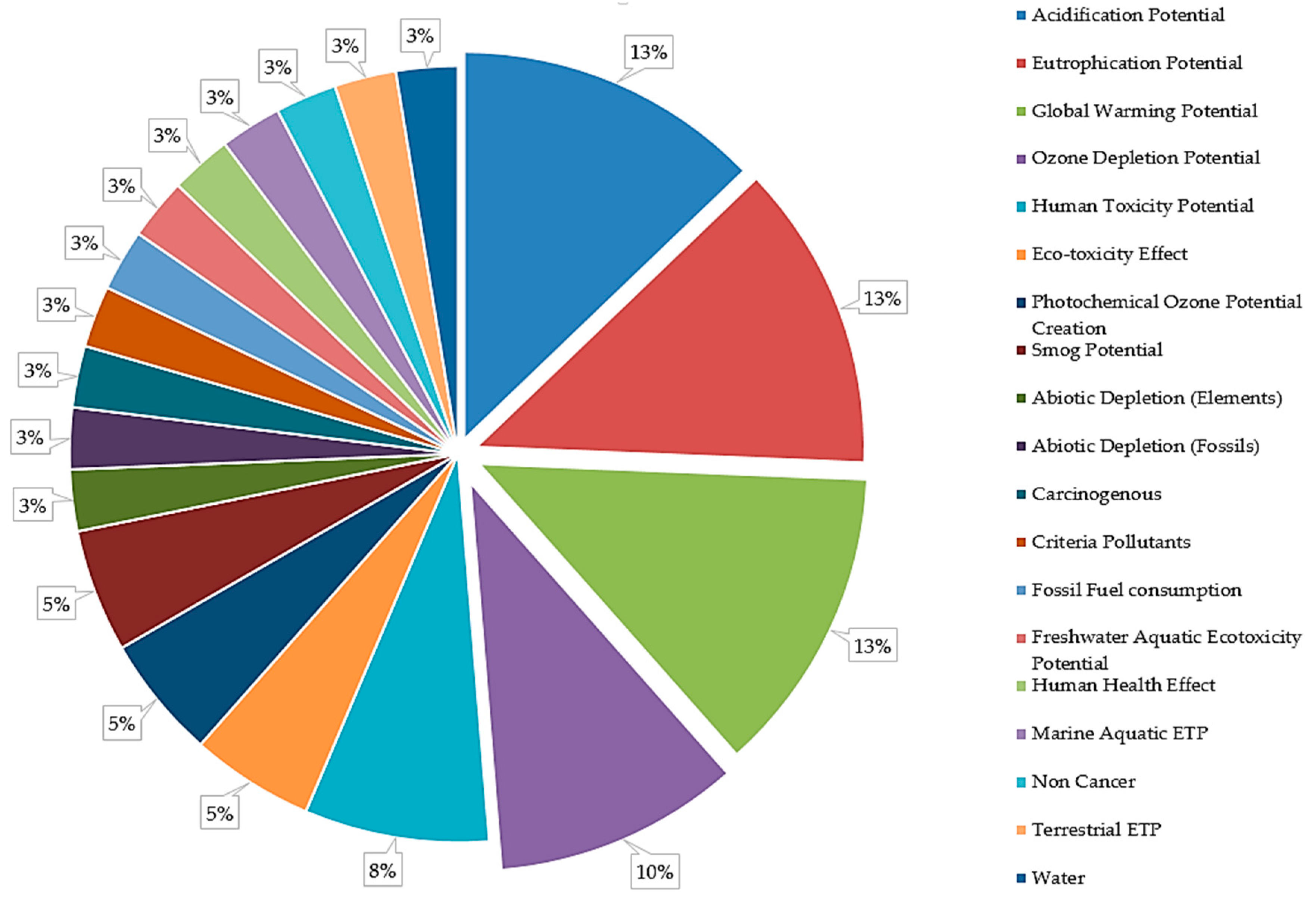
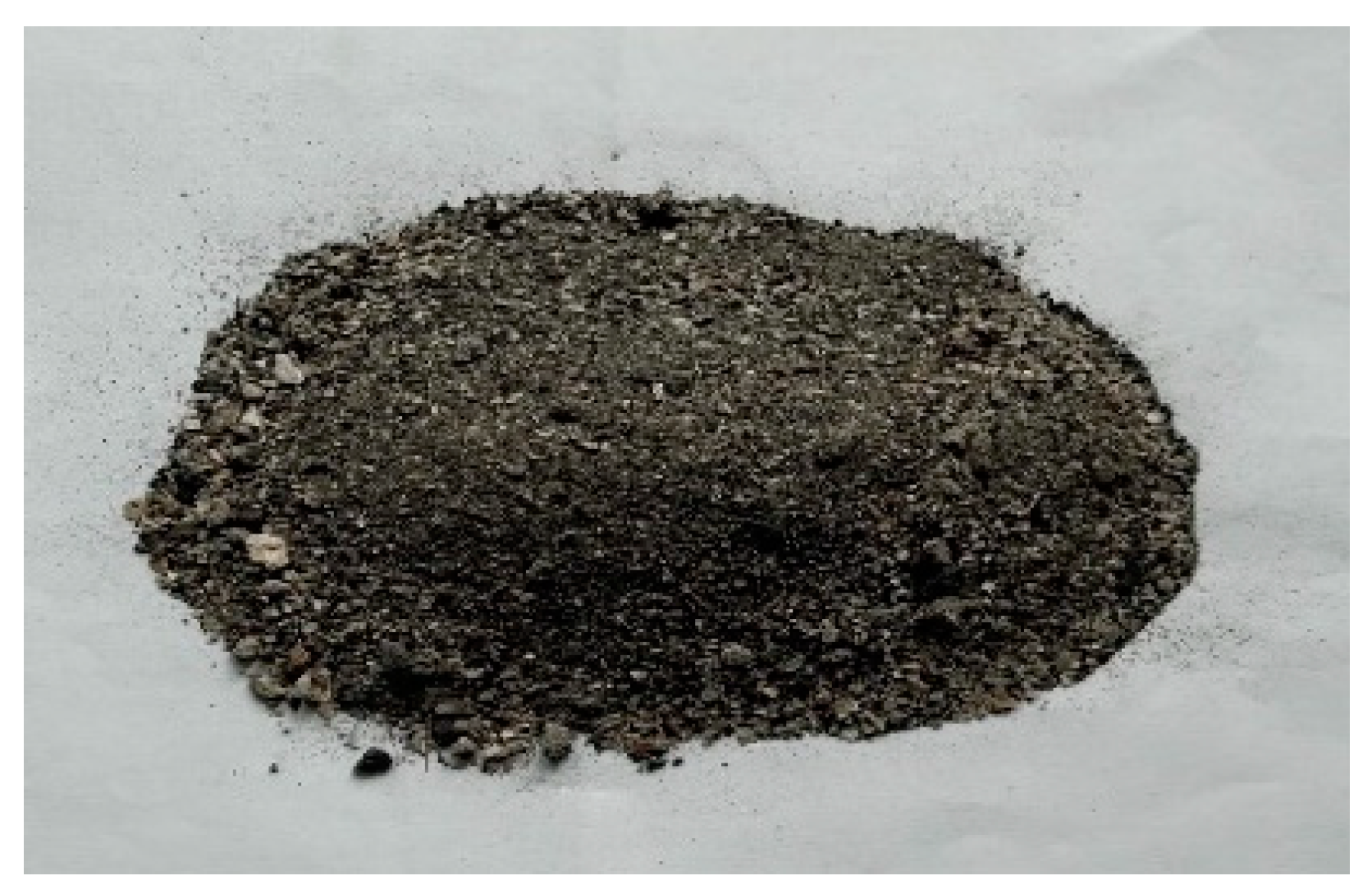
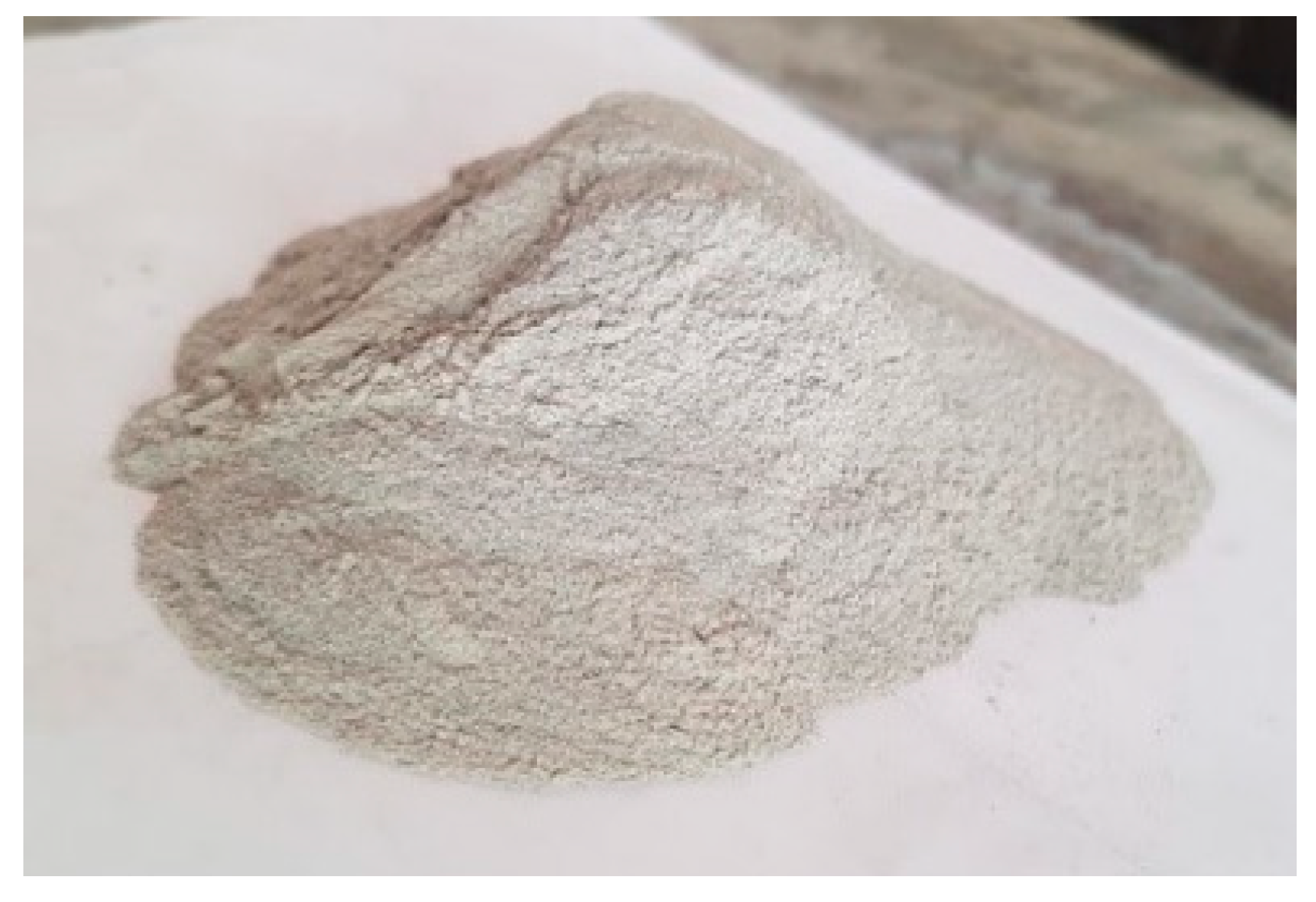


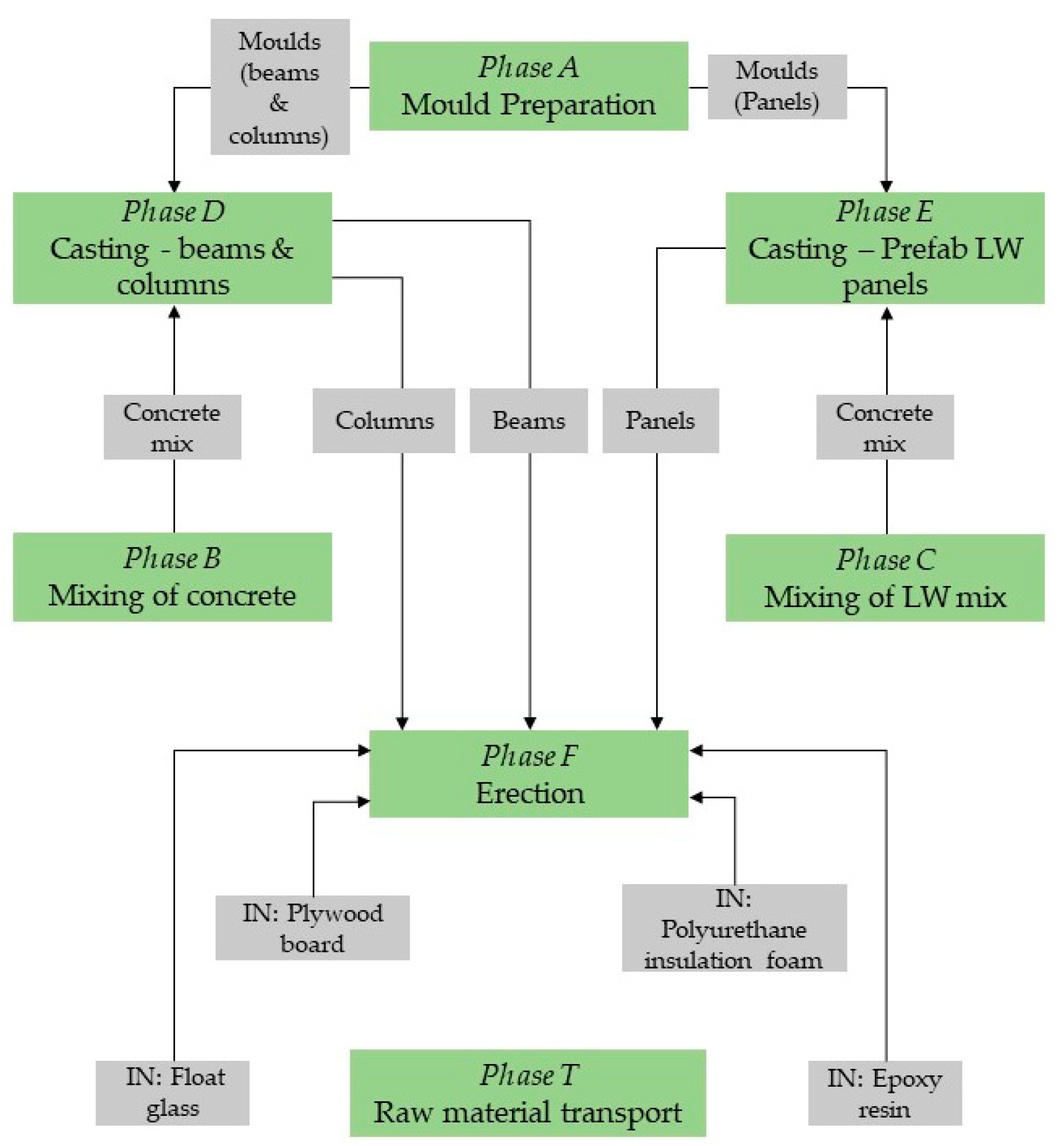

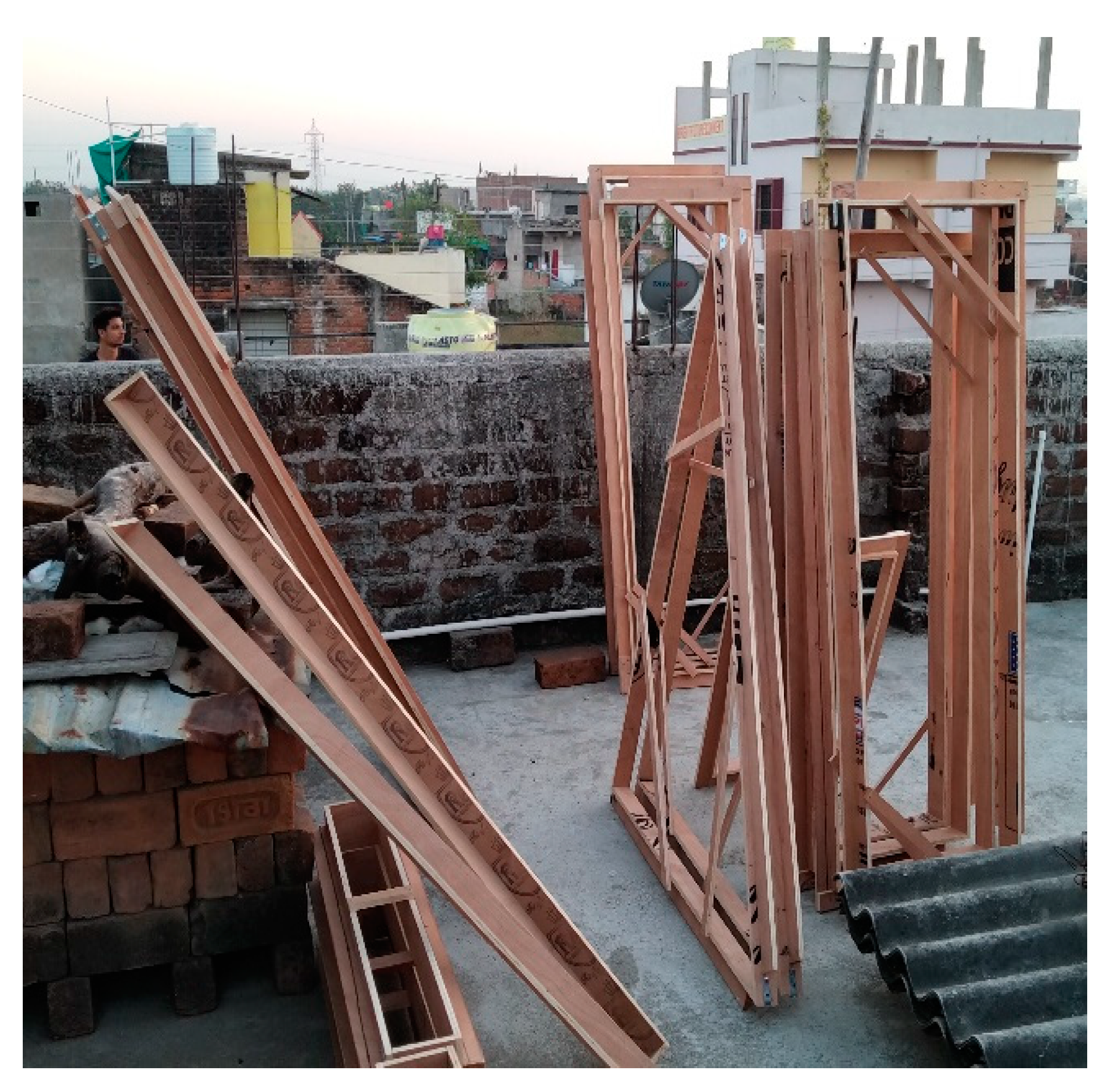


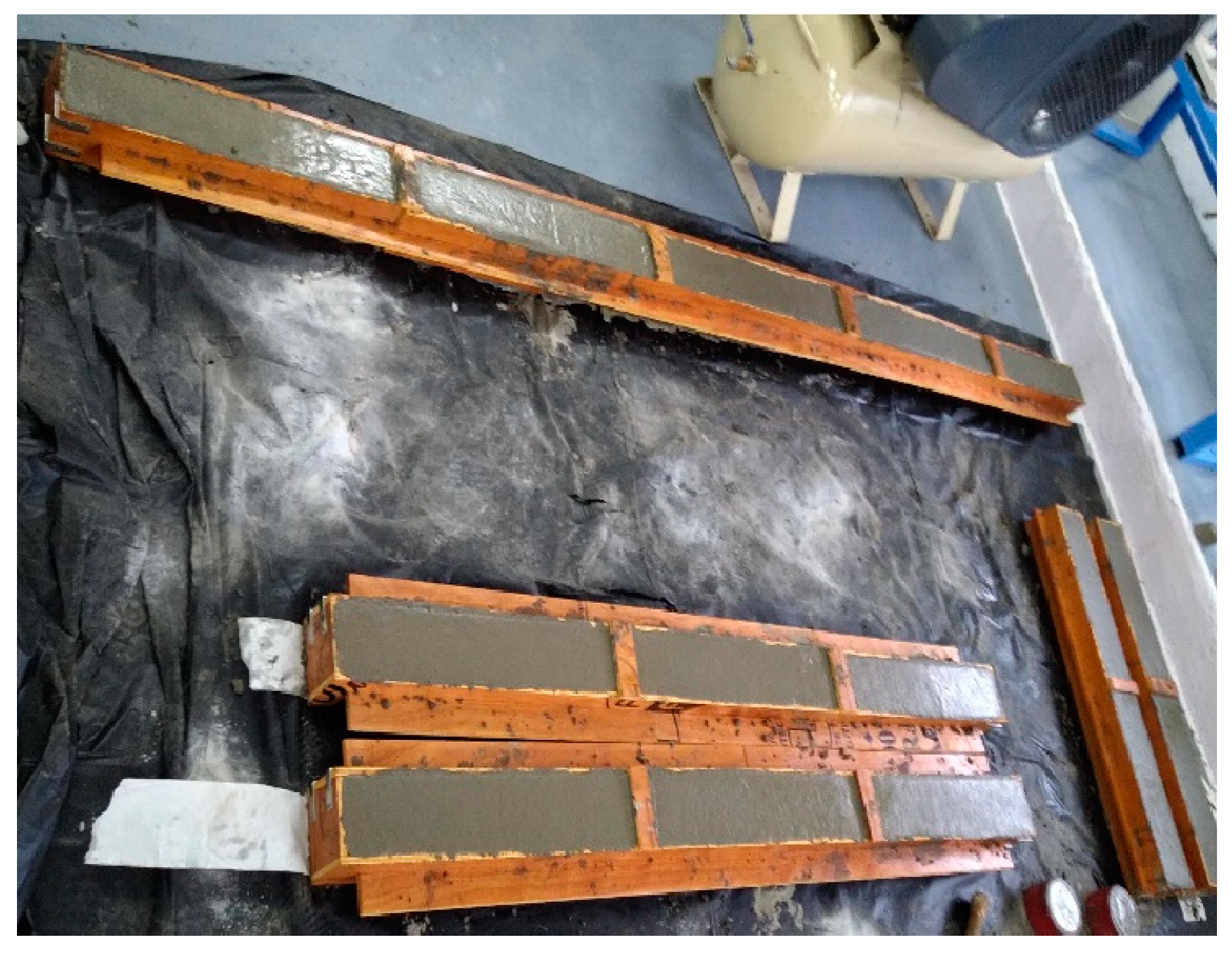

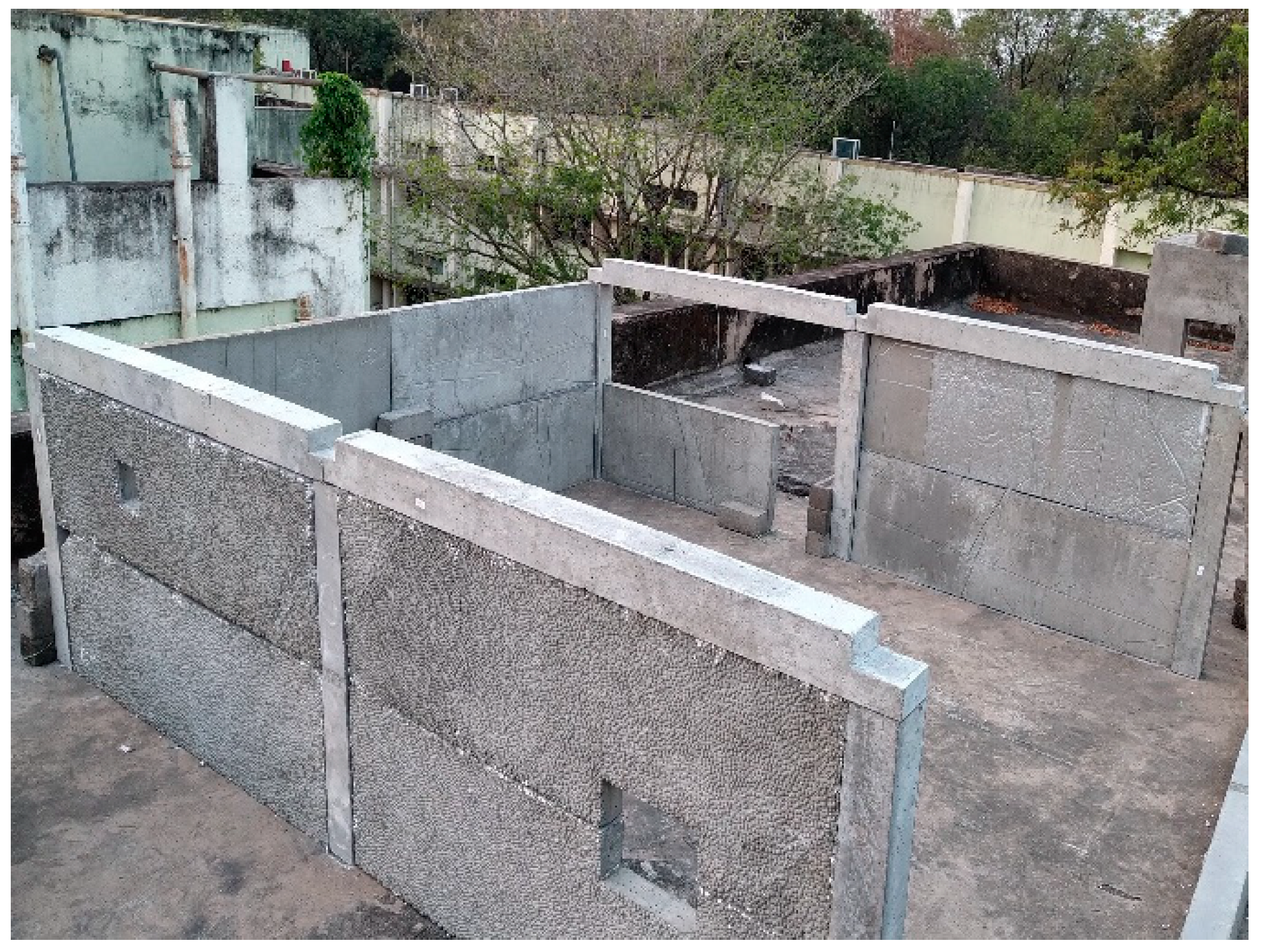
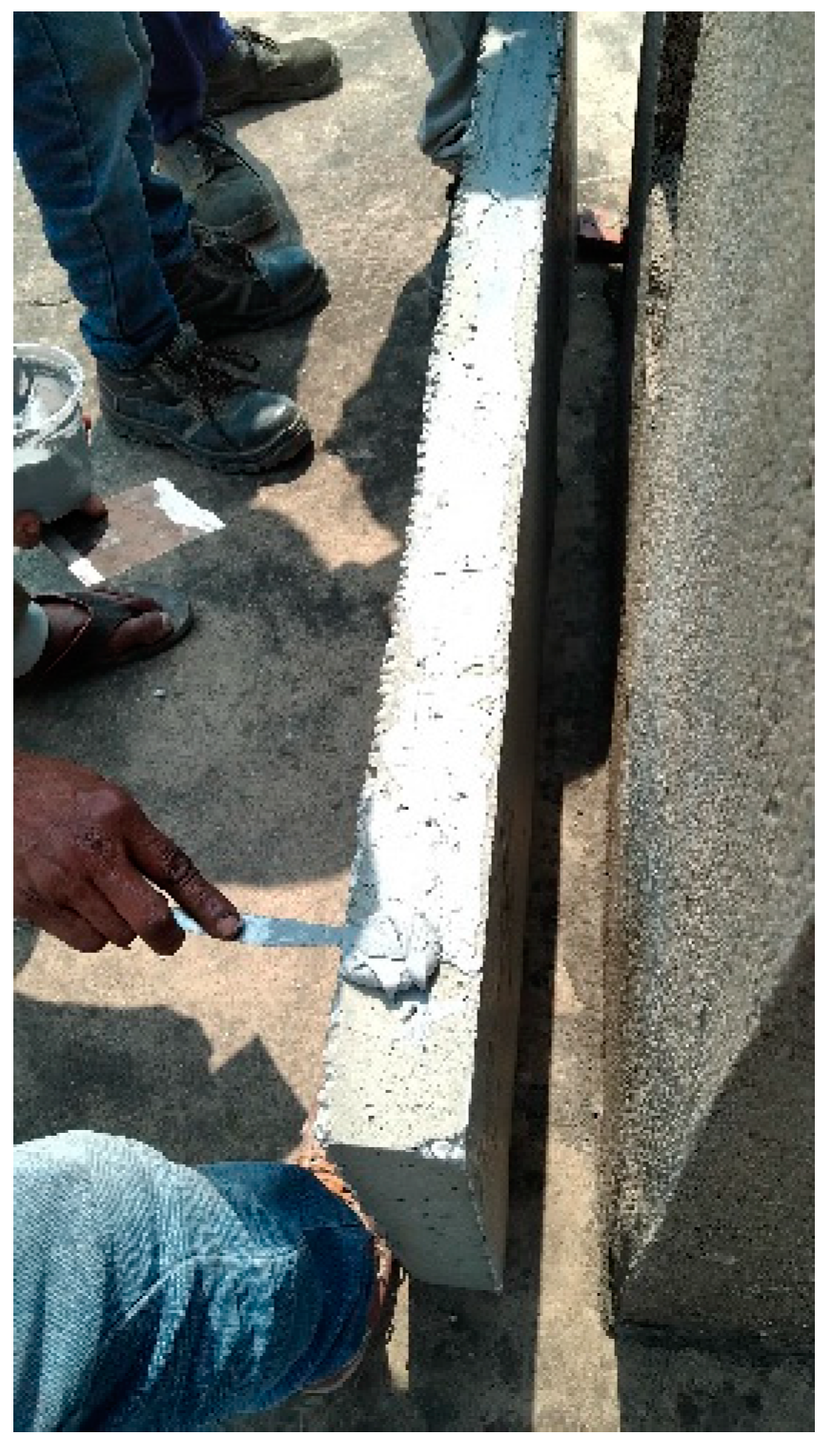

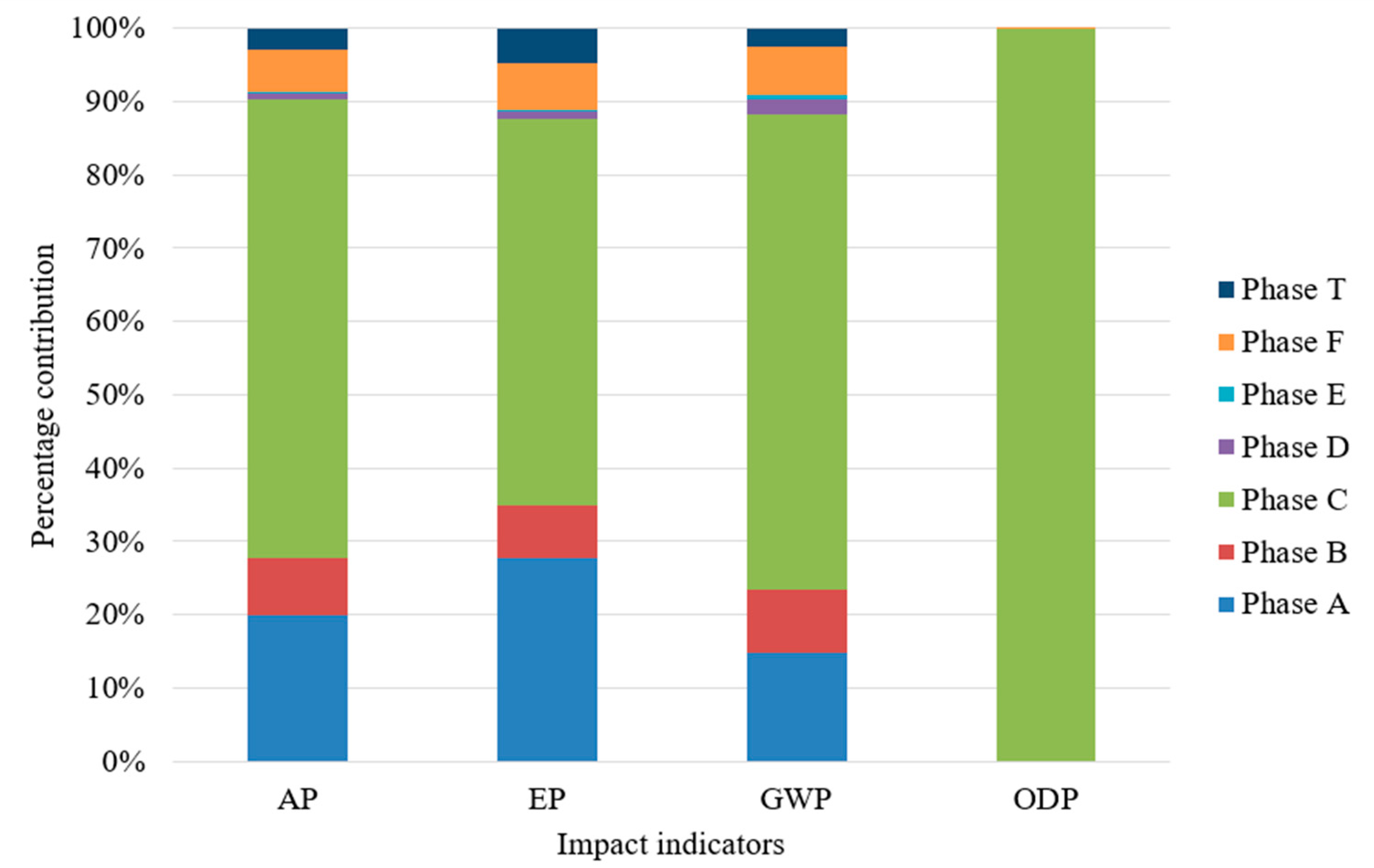
| Product | Cementitious | Aggregates | Water | Admixtures |
|---|---|---|---|---|
| Concrete | 3.92 | 5.42 + 1.36 + 11.72 | 1.86 | 0.0005 + 0.016 |
| Cement | River sand + CFA + gravel | Aeration agent + super plasticizer | ||
| LW mix | 1.98 + 1.97 | 2.46 + 0.27 + 0.0276 | 1.18 | 0.0041 + 0.041 + 0.022 |
| Cement + fly ash | Crushed sand + CFA + EPS | Polymer + accelerator + super plasticizer |
| Product | Density | Water Absorption | Compressive Strength | Flexural Strength | Tensile Strength | Thermal Conductivity |
|---|---|---|---|---|---|---|
| (kg/m3) | (%) | (MPa) | (MPa) | (MPa) | (W/mK) | |
| Concrete | 2342 | 5.8 | 26.91 | 4.02 | 1.83 | 0.81 |
| LW mix | 1312 | 7.6 | 7.05 | 2.16 | 1.27 | 0.40 |
| Codal compliance | IS 2185:2005 (Part 1) [35] | IS 516:1959 [36] | IS 5816:1999 [37] | ASTM C177 [38] | ||
| Phase Code | Name of the Phase |
|---|---|
| A | Mould preparation |
| B | Mixing of Concrete |
| C | Mixing of LW mix |
| D | Casting of beams and columns |
| E | Casting of prefabricated LW panels |
| F | Erection of model house |
| T | Raw material transport (RMT) |
| Sl. No. | Material Input | Quantity | Output | Quantity | Disposal | |
|---|---|---|---|---|---|---|
| 1 | Plywood | 164 kg | Moulds | 18 nos. | Nails (broken)—disposed into bins | 0.4 kg |
| 2 | Nails | 1.5 kg | Wood—some reused & some disposed | 41 kg | ||
| 3 | Electricity (Wood cutter) | 3.8 kWh | Wood—Wastage while finishing-disposed | 24 kg | ||
| Sl. No. | Material Input | Quantity | Output | Quantity | Disposal |
|---|---|---|---|---|---|
| 1 | Mixer (electrical) | 2 kWh | Concrete mix | 465 kg | Waste concrete was cast as paver blocks (To be reused) |
| 2 | Cement | 78.4 kg | |||
| 3 | River Sand | 108.48 kg | |||
| 4 | CFA | 27.12 kg | Waste water after cleaning mixer was sprayed on gravel pathway | ||
| 5 | 20 mm gravel | 117.2 kg | |||
| 6 | 10 mm gravel | 117.2 kg | |||
| 7 | Aeration Agent | 0.01 kg | |||
| 8 | Admixture | 0.32 kg | |||
| 9 | Water | 37.2 kg |
| Sl. No. | Material Input | Quantity | Output | Quantity | Disposal |
|---|---|---|---|---|---|
| 1 | Mixer (electrical) | 22.5 kWh | LW mix | 2110 kg | Waste concrete was cast as paver blocks (To be reused) |
| 2 | Cement | 535.74 kg | |||
| 3 | Fly ash | 532.41 kg | |||
| 4 | Polymer | 1.11 kg | |||
| 5 | Accelerator | 5.55 kg | |||
| 6 | CFA | 73.92 kg | Waste water after cleaning mixer was sprayed on gravel pathway | ||
| 7 | EPS Beads | 9.3 kg | |||
| 8 | Crush sand | 665.4 kg | |||
| 9 | Admixture | 5.94 kg | |||
| 10 | Water | 319.5 kg |
| Sl. No. | Material Input | Quantity | Output | Quantity |
|---|---|---|---|---|
| 1 | Concrete | 465 kg | Precast columns | 6 Nos. |
| 2 | 8 mm rod | 9 kg | ||
| 3 | Mould | 5 nos. | ||
| 4 | Electricity (Hand grinder) | 0.25 kWh | Precast beams | 7 Nos. |
| 5 | Waste oil from automobiles (For oiling moulds) | Lump sum | ||
| 6 | Water (Curing) | Lump sum |
| Sl. No. | Material Input | Quantity | Output | Quantity |
|---|---|---|---|---|
| 1 | Concrete LW mix | 2110 kg | Prefabricated walling panels | 40 Nos. |
| 2 | Chicken Mesh | 2.5 kg | ||
| 3 | Mould | 13 nos. | ||
| 4 | Waste oil from automobiles(For oiling moulds) | Lump sum | ||
| 5 | Water (Curing) | Lump sum |
| Sl. No. | Material Input | Quantity | Output | Quantity |
|---|---|---|---|---|
| 1 | Epoxy grout | 6 kg | Model house | 1 No. |
| 2 | Grouting material | 10 kg | ||
| 3 | Poly urethane foam | 1200 ml | ||
| 4 | Plywood (Doors and windows) | 20 kg | ||
| 5 | Glass (windows) | 1.5 kg |
| Transport Inventory (Distances Travelled in km) | |||||||||||
|---|---|---|---|---|---|---|---|---|---|---|---|
| Mould Preparation | Mixing of Concrete | Mixing of LW Mix | Casting of Beams and Columns | Casting of Panels | Erection | ||||||
| Plywood | 7 | Cement | 2 | Cement | 2 | 8 mm rod | 5 | Steel chicken mesh | 1 | Panels + Columns + Beams | 32 |
| River sand | 2 | Fly ash | 2 | Epoxy grout | 32 | ||||||
| CFA | 37 | CFA | 68 | Grouting material | 32 | ||||||
| Nails | 7 | 20 mm gravel | 2 | EPS beads | 38 | Mould | 35 | Mould | 35 | Poly urethane foam | 1 |
| Plywood (Doors and windows) | 1.5 | ||||||||||
| 10 mm gravel | 2 | Crush sand | 2 | Glass (windows) | 1 | ||||||
| Impact Indicators | Phase A | Phase B | Phase C | Phase D | Phase E | Phase F | Phase T | Total |
|---|---|---|---|---|---|---|---|---|
| AP [kg SO2 eq.] | 0.6440 | 0.2510 | 2.0200 | 0.0228 | 0.0055 | 0.1897 | 0.0933 | 3.2262 |
| EP [kg Phosphate eq.] | 0.1160 | 0.0302 | 0.2210 | 0.0039 | 0.0011 | 0.0268 | 0.0201 | 0.4191 |
| GWP [kg CO2 eq.] | 130.00 | 75.60 | 565.00 | 18.60 | 5.09 | 57.76 | 21.90 | 873.95 |
| ODP [kg R11 eq.] | 2.37 × 10−11 | 5.99 × 10−14 | 4.53 × 10−8 | 6.01 × 10−13 | 1.67 × 10−13 | 3.19 × 10−12 | 2.43 × 10−15 | 4.53 × 10−8 |
Disclaimer/Publisher’s Note: The statements, opinions and data contained in all publications are solely those of the individual author(s) and contributor(s) and not of MDPI and/or the editor(s). MDPI and/or the editor(s) disclaim responsibility for any injury to people or property resulting from any ideas, methods, instructions or products referred to in the content. |
© 2023 by the authors. Licensee MDPI, Basel, Switzerland. This article is an open access article distributed under the terms and conditions of the Creative Commons Attribution (CC BY) license (https://creativecommons.org/licenses/by/4.0/).
Share and Cite
Chippagiri, R.; Biswal, D.; Mandavgane, S.; Bras, A.; Ralegaonkar, R. Life Cycle Assessment of a Sustainable Prefabricated Housing System: A Cradle-to-Site Approach Based on a Small-Scale Experimental Model. Buildings 2023, 13, 964. https://doi.org/10.3390/buildings13040964
Chippagiri R, Biswal D, Mandavgane S, Bras A, Ralegaonkar R. Life Cycle Assessment of a Sustainable Prefabricated Housing System: A Cradle-to-Site Approach Based on a Small-Scale Experimental Model. Buildings. 2023; 13(4):964. https://doi.org/10.3390/buildings13040964
Chicago/Turabian StyleChippagiri, Ravijanya, Divyajyoti Biswal, Sachin Mandavgane, Ana Bras, and Rahul Ralegaonkar. 2023. "Life Cycle Assessment of a Sustainable Prefabricated Housing System: A Cradle-to-Site Approach Based on a Small-Scale Experimental Model" Buildings 13, no. 4: 964. https://doi.org/10.3390/buildings13040964
APA StyleChippagiri, R., Biswal, D., Mandavgane, S., Bras, A., & Ralegaonkar, R. (2023). Life Cycle Assessment of a Sustainable Prefabricated Housing System: A Cradle-to-Site Approach Based on a Small-Scale Experimental Model. Buildings, 13(4), 964. https://doi.org/10.3390/buildings13040964








